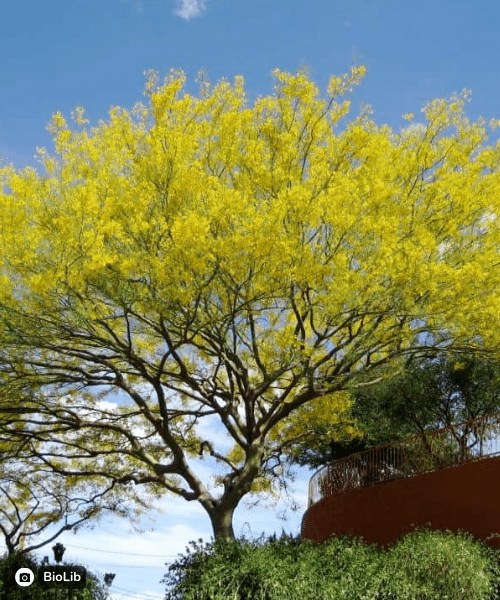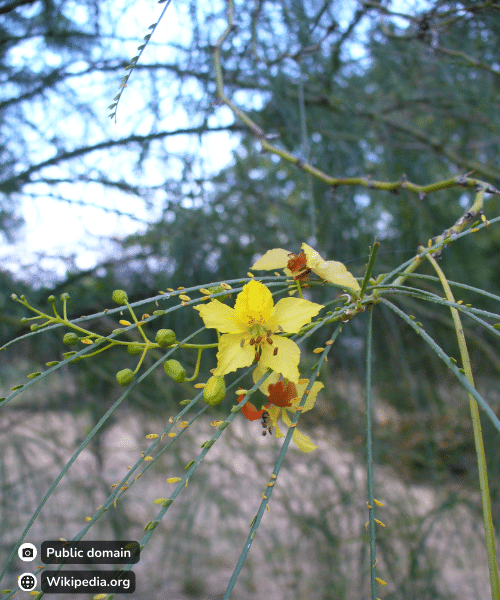Parkinsonia aculeata
Parkinsonia aculeata is a perennial flowering tree species in the pea family, Fabaceae. Parkinsonia aculeata can be a thorny shrub or a small tree.
Other common names for this tree include:
- Palo verde
- Parkinsonia
- Jelly bean tree
- Palo de rayo
- Retama


📊 Statistics
- Average height: 8-10 meters
- Lifespan:up to 150 years
- 5 - 10 meters diameter
Habitat
Parkinsonia aculeata thrives in the sun and has a high tolerance for drought. The tree may remain relatively short, but in moist and humus-rich environments, it becomes a larger, spreading shade tree.
This plant prefers exposure to full sun but can grow in a wide range of dry soils (sand dunes, clay, alkaline and chalky soils, etc.) at elevations ranging from 0 to 1500 meters above sea level.

Application of Parkinsonia
The primary application of this species is ornamental. In Mexico, the leaves are soaked and processed into medicines for fever and epilepsy. Due to the thorns, the foliage is seldom consumed by livestock
More about the Weinmannia tormentosa
The name ‘Jerusalem thorn’ stems from a mistranslation of the Spanish/Portuguese word girasol (‘turning towards the sun’).
The flowering period is in the middle months of spring (March-April or September-October). The flowers are pollinated by bees. The fruit is a seedpod, leathery in appearance, light brown when mature.
The tree grows 2 to 8 meters tall, with a maximum height of 10 meters. Palo verde has many branches with drooping leaves and can have single or multiple stems. The leaves and stems are smooth. The leaves are alternate and pinnate, about 15 to 20 cm long. The leaflets quickly drop off in dry weather (and in some areas in winter), leaving behind the green leaf stalks and branches for photosynthesis.
The branches bear double or triple sharp spines, 7-12 millimeters long, at the leaf axils. The flowers are yellow-orange, fragrant, and typically ~20 mm in diameter. They emerge from a long slender stem in groups of eight to ten. They have five sepals and five petals, with four being brighter and rhombic-ovate, and the fifth elongated, with warmer yellow and purple spots at the base
IUCN Red List

Plant this tree


